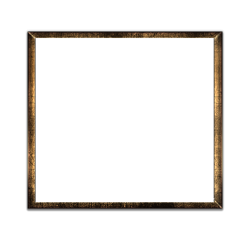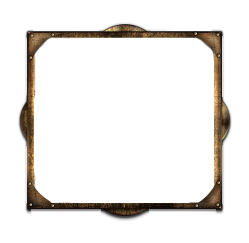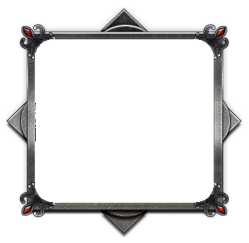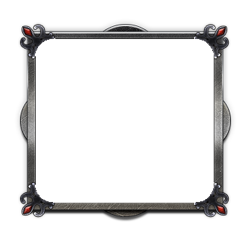If you played an RPG prior to 2004 chances are good you remember an age where character equipment played a very different role than it does today. Equipment was primarily used for damage mitigation, to determine whether your character was melee, ranged, or reach, to identify which types of armor your weapons were effective against, and to balance the game with constraints such as whether or not you could use magic effectively while wielding your weapons or wearing your armor.
It wasn’t until World of Warcraft, which borrowed heavily from the random loot table and ever-increasing character stats of the Diablo franchise, that we began to see the grind for bigger and better weapons in RPGs.
But, one of the side-effects of World of Warcraft that’s not often talked about is the disassociation between what NPCs and PC look like and what they’re actually carrying. Because it’s difficult to have NPCs actually use all the items on their loot table, we got accustomed to a world in which NPCs used or wore one set of items, while rewarded us with a completely different set of items. Likewise, with no house to store things in WoW introduced the “near infinite” inventory system, which makes it impossible to accurately determine what a PC is carrying.
In this week’s design journal we’re going to take a look at the CoE equipment and inventory systems. We’ll talk about our innovative new layering and constraint system which provides for different types of character customization while still making it clear what type of character (PC or NPC) you’re facing. Then we’ll talk about how different types of equipment affect your Survival stats. Finally, we’ll talk about how an innovative new Container system allows CoE to provide an extremely limited inventory, while still feeling natural and intuitive.
 Figure 1 – In-game view of a blacksmith stall in the town market
Figure 1 – In-game view of a blacksmith stall in the town market
Equipment
Chronicles of Elyria uses a system of "What You See Is What You Get." This has a couple meanings within the scope of the game. First, it means that when looting something or someone you’ll find exactly what you could see. Nothing more, and nothing less. This is true whether it's another player or an NPC. You won't attack an NPC wielding some powerful magic weapon, only to loot his body and find a different powerful weapon, several, or none. If you could see it, you can loot it. If you didn’t see it or they didn't use it, you likely won't find it.
It's also true when attacking animals. You won't kill a giant brown bear and loot a pair of chain boots. You'd get hide, meat, bones, and maybe some teeth or claws.
The other important aspect of WYSIWYG is that you can evaluate characters encountered in the wild based on what they're wearing. Because there are no nameplates over NPCs or animals that show their relative level, it'll be up to you to determine if you're up for the challenge. One of the ways you can do that is by glancing at the gear someone is wearing.
If you see someone approaching you on the road in a shirt and pants, leather jacket, and no visible weapon, they're likely to be of little risk to you. On the other hand, if someone approaches wearing a studded leather vest, a rapier, and an off-hand dagger, chances are good they know how to use them.
Types of Equipment
Chronicles of Elyria has many different types of wearable equipment. One of the things that makes CoE unique is the way in which it allows or disallows different types of equipment in order to encourage different play styles.
Equipment in Chronicles of Elyria is broken up into several different equipment slots. These are:
- Head – Used for helmets, caps, coifs, and hooded cloaks
- Face – Masks and cowls
- Neck – Necklaces, cowls, and coifs
- Torso – Clothing, armor, and holsters
- Back – Backpacks, capes, cloaks, and holsters
- Arms – Bracers, gauntlets, bracelets, and bucklers
- Hands – Gauntlets, gloves, knuckles, and rings
- Waist – Belts
- Legs – Garters, trousers, skirts, and leggings
- Feet – Boots
As you can see from the equipment list above, different slots can often equip several different types of items. However, the type of item equippable is often constrained by what else is equipped.
For example, hands can have either gauntlets, gloves, or rings, but it is not possible to have all three simultaneously. Furthermore, gauntlets act as both arm and hand items. So if you equip a gauntlet, you fill both item slots.
In addition to the above, the head can have many different things, but if you equip a coif, you can’t wear anything on the neck. Likewise, if you equip a hooded cloak, you can’t put anything on your head. While these combinations may seem arbitrary at first, they serve to identify purpose and functionality. Someone wearing a hooded cloak is likely trying to conceal their identity - not something generally done with a helmet. However, a mask and hooded cloak is completely - acceptable?
 Figure 2 – Render of equipment layer 1 – dress shirt
Figure 2 – Render of equipment layer 1 – dress shirt
Equipment Layering
In order to customize characters to deal with different climates and occupations, CoE uses a unique layering system for equipment. Certain body parts have the ability to contain multiple different pieces of equipment simultaneously.
There are two item slots which have multiple layers. These are the torso and the legs. Depending on what you put in a lower level layer, it may limit what you can put in a higher layer.
Torso: The torso is divided up into three layers.
- Layer one contains shirts, blouses, and dresses.
- Layer two contains jackets, jerkins, tunics, doublets, vests, and some chain shirts.
- Layer three contains robes or mail.
In this way, it's possible to be wearing a shirt, leather jerkin, and half-plate mail armor all at the same time. It is not, however, possible to put that all under a robe.
Legs: The legs are divided up into two layers.
- Layer one contains either trousers or garters.
- Layer two contains either armor, a skirt, or a kilt.
This system allows a woman to wear a garter underneath a skirt. Likewise, it allows a male to wear trousers with armor over top. Note, it's not possible to wear garters and armor. Sorry ladies. Armor on the bottom half always looks like trousers or a skirt. No chain bikinis.
 Figure 3 – Render of equipment layer 2 – leather jerkin
Figure 3 – Render of equipment layer 2 – leather jerkin
Survival
Chronicles of Elyria is unquestionably a survival game. It's designed to make people think about the actions they take in the wild in order to guarantee their survival. The equipment a character has on effects them in many unique ways, completely aside from the obvious need to carry food and water.
Weight & Fatigue
Up to some maximum amount of weight your character can walk all day without getting tired. But go beyond that and your character will begin to become fatigued. The more weight your character is carrying, the quicker you’ll be forced to rest.
Sprinting & Movement Speed
Some types of armor may slow your run speed down to a sort of canter and will cause you to become fatigued more quickly while running. The heaviest armor will cause you to become fatigued more quickly while sprinting, or may prevent sprinting altogether.
Temperature
Players are also effected by the equipment they wear and the current temperature. If it's exceptionally cold out, players would be wise to bundle up with a jacket over their shirt. If it's extremely cold out, they may even consider wearing a cape or cloak to keep warm. The opposite is also true. If it's extremely hot out, wearing multiple layers of clothing, or metal armor could cause you to overheat.
Weather & Terrain
On a clear day the weather, aside from the temperature, will have little impact on your overall comfort. However, if it's raining out, windy, or foggy, it will have an impact on your rate of movement. Likewise, if there's snow on the ground, or you're trudging along through a muddy swamp, you could become encumbered. The heavier your armor, the more difficult the muddy ground will be to navigate.
Drowning
Heavy armor sinks. I think that's really all that needs to be said on that. Failure to appreciate the laws of fluid dynamics and gravity could result in permadeath.
Gender & Sizes
In Chronicles of Elyria, one size does not fit all. In fact, the same size may not even fit the opposite gender. In CoE, there's gender-neutral equipment, equipment for men and women, and equipment for the small, medium, and large. Wearing equipment too big for you will make it less effective, and wearing equipment too small may be impossible. Of course, this can be remedied by taking it to an appropriate craftsman and having it resized. C'mon villagers, never say we didn't do our best to keep you in business!
 Figure 4 – Render of equipment layer 3 – half-plate mail
Figure 4 – Render of equipment layer 3 – half-plate mail
Inventory
One of the things that may strike people as odd at first is the extremely limited inventory in Chronicles of Elyria. Initially, this went back to what we said before about WYSIWYG. If you can’t see it, it shouldn’t be there.
But beyond that, limited inventory again creates not only opportunities for dramatic storytelling, but also dedicated Gatherers. It costs money to effectively tow the day's haul from the mines back to town. By requiring people to invest in pack animals, carts, wagons, and other means of transportation, it forces them to decide whether it's worth the investment, or whether it's better just to pay someone to do it for you.
Containers
Chronicles of Elyria uses a unique system of containers where all objects on your person, pack-animal, or other mode of transportation must either be in a container, or held in your hands.
As we talked about earlier your character's equipment has multiple slots for storing boots, backpacks, bracers, belts, etc... What we didn't mention before is that experienced leather workers, tailors, and blacksmiths can craft items which provide additional storage in the form of pouches, pockets, purses and hidden compartments.
For example, a talented cobbler could put a hidden compartment in a boot that allows for the storage of daggers or retractable blades. Armor smiths can create bracers with places for either retractable blades or wrist-mounted crossbows.
Tailors and leatherworkers can make garters with places for hidden weapons, belts with a varying number of attachment points, cloaks with sewn in hidden compartments, and most pants come with pockets for carrying a small amount of coins or other items.
Of those, belts are among the most interesting and again speaks to CoE's goal of making people measurable from a distance. When purchasing a belt with two attach points you can use both for additional storage, one for a coin purse and the other for a scabbard mount, or if you plan on dual wielding, you can actually put two separate scabbard mounts. The more talented the leatherworker, the more attach points can be placed on a belt. Assassins may find it particularly interesting to put pockets for thrown weapons, or even several places for extra daggers.
 Figure 5 – Early in-game view of the equipment screen
Figure 5 – Early in-game view of the equipment screen
Volume & Weight
Chronicles of Elyria uses a weight and volume system for all containers. While we do use a grid system within a container to help keep stuff organized, the number of slots are infinite up to the maximum volume or weight limit for the container. In this way, you can continue to put in a ton of small items without running out of space to put them.
It's also important to note that our grid system uses multiple grid slots for different size items. This is mostly to help users understand the relative size of objects, to be able to estimate volume quickly without having to hover over an item, and to help quickly locate items of different types.
The important thing to understand though is that you can't put additional items into a container that would go over either the weight or volume limit.
Stackable Items
As with many other MMOs Chronicles of Elyria utilizes stackable items within containers. If you've got 15 blank scrolls in your backpack, having them all grouped into a single slot saves space on the screen, time spent scrolling, and makes the inventory more readable at first glance.
What's next?
In next week’s design journal we’re going to revisit hooded cloaks and equipment as we talk about identities, disguises, and reputation.













